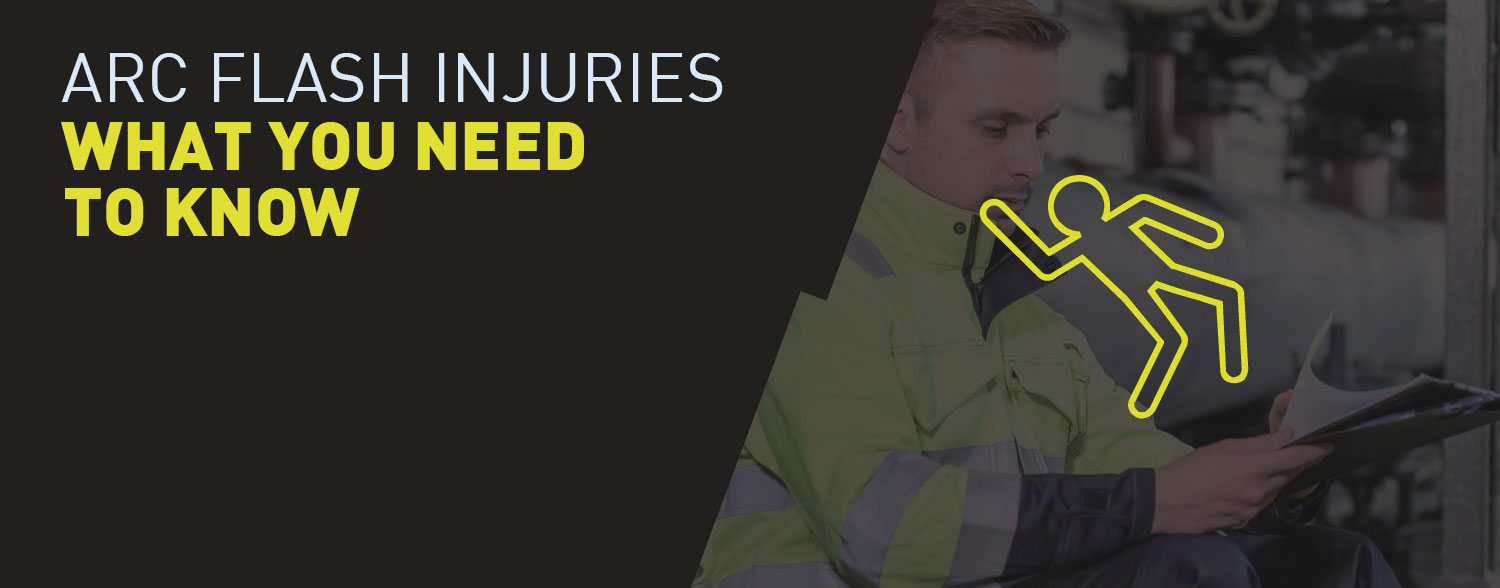
They say knowledge is power and that’s certainly the case when it comes to your health and safety at work – and particularly in the case of Arc Flash injuries.
It’s difficult to quantify the number of Arc Flash injuries in the UK as there is no specific category to report them. Reports to the HSE suggest around 1,000 electrical incidents take place in the UK each year, with around 30 people dying from injuries sustained as a result – mostly from contact with overhead cables. But the HSE cautions that even non-fatal shocks can cause severe and permanent injury.
ProGARM’s own research identified that a staggering 57% of electrical workers had first-hand experience of an Arc Flash incident. If you were unfortunate enough to be caught in an Arc Flash incident, what kind of injuries might you receive?
What causes Arc Flash injuries?
An Arc Flash happens when an electrical discharge travels through the air and releases an intense burst of energy. They are often caused by an inadvertent contact between an energised conductor and another conductor or an earthed surface.
Not only the person working on the equipment but also those nearby can be severely injured as a result of an Arc Flash incident. The main causes of those injuries are the heat generated by the incident which can also cause fires, the bright light generated by the flash, and the blast of energy itself.
Arc Flash injuries – heat and fire
An Arc Flash can generate temperatures of more than 35,000 Fahrenheit – that’s hotter than the sun. This intense heat can cause significant burns to the body even when a worker is five or six metres away from the source of the incident. If it’s not designed to withstand an Arc Flash, clothing can melt on to skin, be vaporised or set on fire.
And the danger doesn’t stop there. The heat also vaporises metals in the vicinity of the incident and creates gases which can cause burns in the mouth, throat and lungs as they are inhaled. Droplets of molten metal harden rapidly and can lodge in a person’s skin, ignite clothing or cause lung damage.
Fires which are started by the heat of the Arc Flash, also known as an electrical flashover, can also cause burns.
Arc Flash injuries – the blast
Depending on the energy within the Arc Flash, the blast it creates – caused by the thermal energy – can knock workers off their feet and send shrapnel flying through the air at hundreds of miles per hour.
The risks of injury related to the blast include being injured by flying debris which could lead to concussion or even brain injuries, broken bones, and hearing loss or ruptured ear drums from the sound. Noise levels created from blasts have been measured at up to 141 decibels at two feet from the source.
Arc Flash injuries – the flash
A bright ultraviolet light is emitted when an Arc Flash occurs. This can cause what eye specialists cause a flash burn – it’s also known as welder’s eye or arc eye as it’s common in the welding industry.
Flash burns are like sunburn on the eye and, although they can heal themselves, there is the possibility of infection which would hamper recovery.
There has been much more research into Arc Flash in the US. According to the State of Washington’s Arc Flash/Blast fact sheetabout the aftermath of an Arc Flash: “Physically, victims may suffer from chronic pain and scarring. Workers may also have difficulty reintegrating into the community, and may experience anxiety, depression, or other psychological symptoms. The social and economic costs may also be high.
“Some workers may not be able to return to their pre-injury job. Employers bear the costs associated with lost productivity, reduced competitiveness, employee rehiring and retraining, as well being subject to increases in workers’ compensation premiums.”
PPE to keep you safe from Arc Flash injuries
Here at ProGARM we live and breathe Arc Flash, continually innovating and improving our range of personal protective equipment.
For a real life example of our PPE in action watch Eddie’s story here. He was wearing our PPE when he was hit by an arc flash blast. Luckily the story ends well, but as you will see, it could have been very different.
The following video shows the very real danger of breaking ground and striking an underground cable.
Our Arc Flash-rated base layers, coveralls and other clothing will not melt or burn in the event of an incident. Our ThermSAFETMcomponents – buttons, zips and other fastenings – are flame and heat resistant, military grade and tested to ensure they will resist Arc Flash conditions and still work after a blast.
Our helmets and visors will protect your eyes from UV light and ear defenders will ensure your hearing is protected too.
To get expert advice on what PPE you need to ensure your team is protected by Arc Flash injuries, give our friendly team a call on +44 (0) 1482 679600.
This is one post in a series ‘All about Arc Flash’. Continue reading the next in the series or return to the start if you like.
Make sure that you’re specifying the right PPE for your team.
Read our free guide on the top considerations when choosing Arc Flash clothing & PPE below and make the best choice for you and your team via the link below ⬇.
